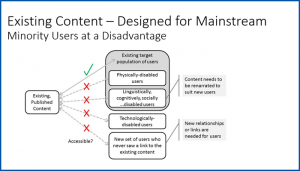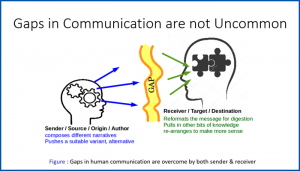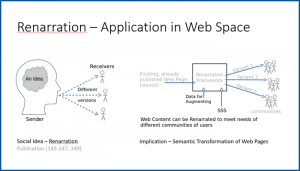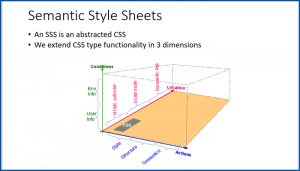Gollapudi V R J Sai Prasad received his doctorate in Computer Science and Engineering (CSE). His research work was supervised by Dr. Venkatesh Choppella and thesis reviewed by Prof. T .V Prabhakar, IIT Kanpur; Dr. Sanjiva Prasad, IIT Delhi and Prof. Kesav Nori.
Here’s a summary of Sai Prasad’s thesis, Semantic Style Sheets for Renarrating the Web (v2.4) as explained by him:
We are intrigued by the problem of Web Accessibility. While it is somewhat intuitive to imagine the barriers a disabled person may face in accessing content on the web, they are not the only segments of users facing accessibility challenges. For instance, users with poor English abilities, or users with less domain exposure, or users with different thinking levels also face access barriers when reaching out to mainstream targeted public content. We adopt the existing social technique of Renarration as a mechanism to overcome the accessibility problem. More formally, renarration can be treated as a semantic transformation function applied on a given web page to generate a variant. Given this, the problem statement for our research becomes: What is that web architecture that would enable one or more volunteer users to manipulate, modify, process or transform published web content into one or more alternate views, such that each variant view now may deliver a different meaning to its targeted community of viewers? in our research, we address the web content accessibility problem, especially as it relates to the able-bodied but non main-stream users. We use the existing social technique of renarration and apply it to web content as a semantic transformation function. Keeping the potentially non-technical end-user in mind, we approach the web page transformation problem by way of style sheets. That is, we see semantic transformation being aided by a Semantic Style Sheet. The notion of SSS is realized as a Domain Specific Language. The grammar for this SSS is essentially derived as an extension of the abstractions we unpack from CSS. We further contribute to the case of semantic transformation by proposing an ontology based conceptual model for an arbitrary web page. And we show a way to juxtapose multiple semantic structures on a given, already published web page. Finally, we present this SSS based work as a framework consisting of a SSS-Maker, SSS-Renderer and a SSS-Database. This is how we renarrate the web for improving accessibility.




Overall we have conducted over 23 experiments, surveys and similar research methods. These were published in over 12 international, computer science publications, with few more pending and one being in a Journal.



